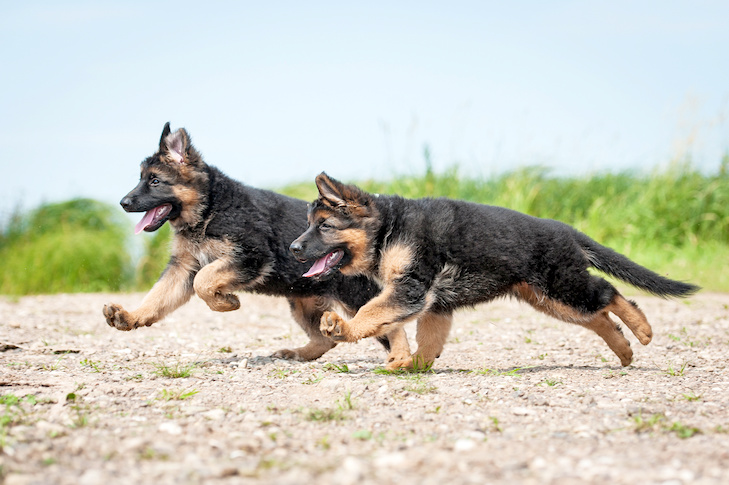
The Labrador Retriever continues to enjoy a healthy reign as the country’s number-one dog in the first decade of the 21st century. Labrador Retrievers took over the number-one position in 1991 and have remained there since. The AKC releases the most popular dog breeds for the past year every spring, and
1. Labrador Retrievers

Despite its name, the Labrador Retriever originated in Newfoundland, not Labrador, in Canada. The area was once populated with small water dogs, which were bred with Newfoundlands, to produce a breed referred to as the St. John’s Water Dog. This was an early prototype of the Lab that you see today. But they are not a new breed: the pedigrees of the two most influential Labs go back as far as 1878. Labs are also one of the primary breeds selected as guide-rescue dogs.
2. German Shepherd Dogs

Derived from the old breeds of herding and farm dogs, the German Shepherd Dog has been considered a loyal servant and companion for centuries. The GSD is also distinguished for its courage and ability to assimilate and retain training for such special services, such as police work and as a guide dog for the blind.
3. Golden Retrievers

Records kept from 1850 to 1890 near Inverness, Scotland, document the development of the original strain of Golden Retrievers. By the end of the 19th century, Yellow or Golden Retrievers were well established in England. They were first shown in England in 1908 in classes for Flat-Coated Retrievers “of any color.”
4. Beagles

The actual origin of the Beagle seems to be obscure because of the absence of reliable documentation on the earliest days of development. The turning point for American Beagles came in the 1860s, when dogs from a well-bred strain in England were imported to inject a beautiful breed type.
5. Bulldogs

The Bulldog, to the best of our knowledge, originated in the British Isles. The “bull” in its name referred to the dog’s use in the sport of bull baiting, an extremely cruel practice in which dogs attempted to immobilize a bull by attacking and biting it. In addition to its supposed entertainment value, it was believed at the time that stimulating the bull in such fashion improved its meat prior to slaughter for sale in the markets. The Cruelty to Animals Act of 1835 put an end to the sport.
6. Yorkshire Terriers

The breed became known as the Yorkshire Terrier in 1970 after the Westmoreland show, when a writer reported in The Field magazine that “they ought no longer be called Scotch Terriers, but Yorkshire Terriers for having been so improved there.” The earliest record of a Yorkshire Terrier born in the United States dates to 1872. Classes for the breed have been offered in all shows since 1878.
7. Boxers

Although the breed has reached its greatest level of perfection in Germany during the past 100 years, the Boxer comes from a line of dogs known throughout Europe since the 16th century. Prior to that time, ancestors of the breed would hardly be recognized as Boxers. Still, evidence points to the Boxer as one of the many descendants of the old fighting dog of the high valleys of Tibet. The Boxer is cousin to practically all recognized breeds of the Bulldog type and these can be traced to basic Molossus blood.
8. Poodles

The Poodle is supposed to have originated in Germany, where it is known as the Pudel or Canis Familiaris Aquatius. However, for years it has been regarded as the national dog of France, where it was commonly used as a retriever as well as, the Caniche, which is derived from chien canard or duck dog. Doubtless the English word “poodle” comes from the German pudel or pudelin, meaning to splash in the water.
9. Rottweilers

It’s possible that the Rottweiler is descended from one of the drover dogs indigenous to ancient Rome. The drover dog has been described by various credible sources as having been of the Mastiff-type, a dependable, rugged and willing worker, who is intelligent and protective. At the turn of the 20th century, the Rottweiler emerged as a popular police dog.
10. Dachshunds

The Dachshund can be found in historical accounts dating back to the 15th, 16th and 17th centuries, when illustrations reflected badgers being hunted with dogs with elongated bodies, short legs and hound-type ears. Early in the 17th century, the name Dachshund (badger dog) became the designation of a breed type with smooth and longhaired varieties. In 1890, wirehairs were added as a third variety.

